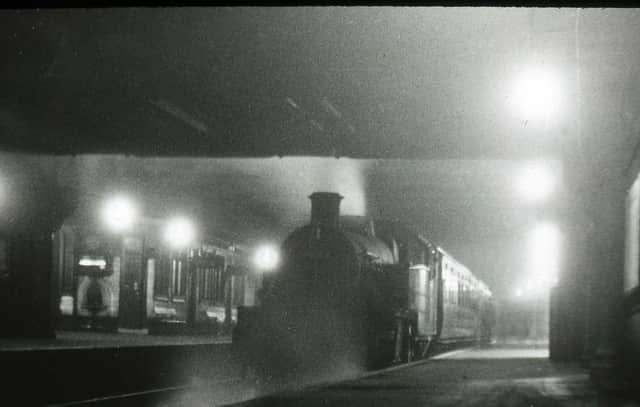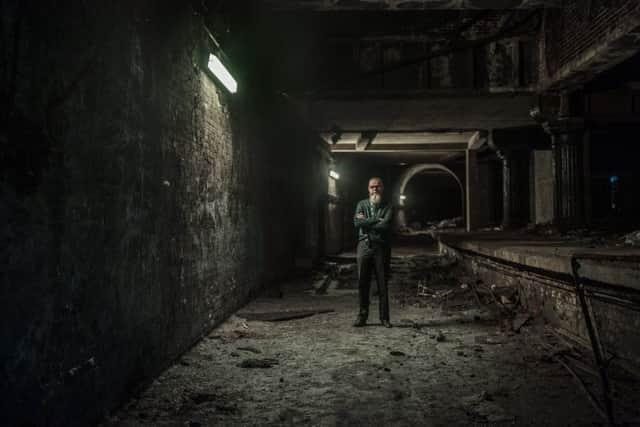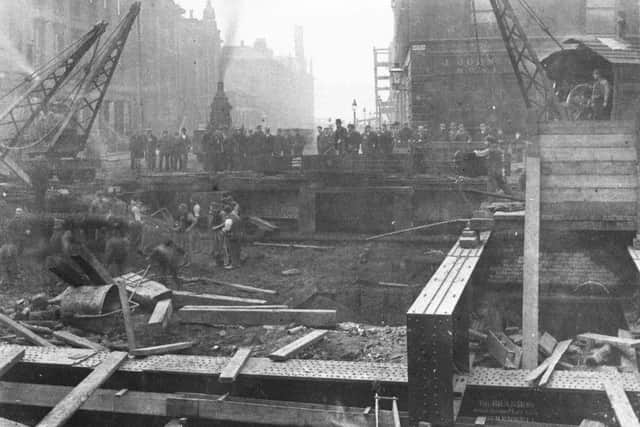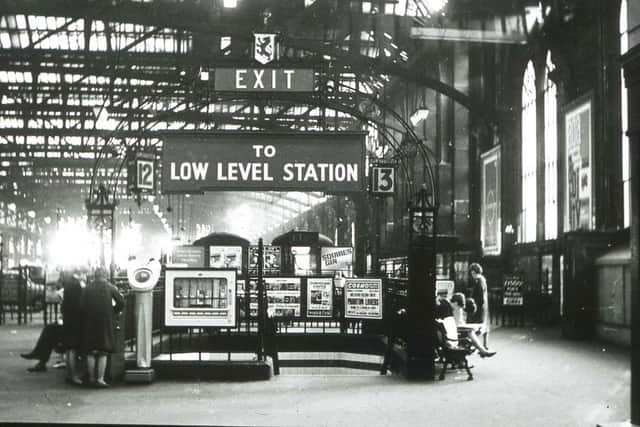Hidden Glasgow Central platform to be re-opened after 50 years


Tracks will be re-laid and a vintage train carriage from the era shunted into the long-forgotten low-level platform at Glasgow Central, The Scotsman has learned.
A re-created bookstall will display historic newspapers, with other features to include shop fronts, old-fashioned vending machines and gas-effect lighting.
Advertisement
Hide AdAdvertisement
Hide AdFunding for the restoration, which is due to start next month, will come from revenue from the tours of the station, which have attracted 29,000 people in two years.


Old rails which have been replaced on other lines will be laid by Network Rail trainees on the old track bed.
The low-level station closed in 1964, and two of its four platforms remained shut when the cross-city Argyle line re-opened in 1977.
The disused platform to be restored is now divided from the re-opened ones by a wall. A new staircase and lighting were installed last year to provide access, which was previously only possible by ladder.
The completely enclosed platform has lain virtually untouched since smoke from steam trains deposited their last soot on the blackened brick walls and roof more than half a century ago.


The line - which opened in 1896 and runs underground through the city centre - was described as “sombre, sulphurous and Plutonian” by the poet C Hamilton Ellis in 1938.
Smoke from trains was so thick that in the gloom, knife-wielding robbers cut handbags from the arms of female passengers. The crimes led to the creation of a women’s waiting room to improve safety.
The restoration plans are part of a development scheme for the tours drawn up by station owner Network Rail.
Advertisement
Hide AdAdvertisement
Hide AdGlasgow Central is used by 34 million people a year and more than 1,000 trains a day.


Station manager Susan Holden said: “Underneath Central, there is a whole other world, which has a big story to tell.
“The tours are providing us with new income we never had before.”
The current tours take visitors below stairs, to areas not normally seen by the public, such as huge former coal and grain stores, and a temporary mortuary used in the First World War.
The dead were carried off trains and left on rows of stretchers covered in Army blankets. Their relatives had the horrific task of finding and identifying them.


Widows often had to resort to paying strangers loitering on the streets outside to carry the stretchers for them.
Some of the empty stretchers were still stored at the station as late as the 1950s, and a hunt is now on to find surviving examples to go on display.
Trips onto the station’s 48,000-pane glass roof - one of the largest in Europe - are also to be revived as a separate tour, offering stunning views across the city
Advertisement
Hide AdAdvertisement
Hide AdGlasgow Central historian Paul Lyons, who organises the trips, said: “They are not just tours of a railway station, but tap into the consciousness of the people of Glasgow.
“I never thought we would have tapped into the psyche of the city, but there is such a love for the railway.
“We are helping to keep people’s memories alive, such as a couple in their late 80s who came on a tour and whose parents met at the station in the early 1900s, or people who saw off soldiers leaving for the First World War from platform one, never to come back.”


Such stories are incorporated into the tours, while new artefacts keep coming to light, such as telegrams from 1919, a pack of Kensitas cigarettes from 1928, and newspapers from the 1940s.
Mr Lyons is also planning a First World War memorial to the women of Glasgow, including a brass plaque and a poem in Scots.
The huge interest in the tours have included 83,500 applications for 100 free places during the Doors Open Day festival. One visitor has been on the tour 12 times.
Their success has led Network Rail to consider launching tours at some of the other stations it manages, including King’s Cross in London.
However, at Waverley Station in Edinburgh, funding would be required to provide safe public access to closed-off areas under the concourse.
Advertisement
Hide AdAdvertisement
Hide AdRail industry insiders welcomed the development of the Glasgow Central tours.
One said: “This project will help recapture the era when the Second City of Empire was awash with confidence and optimism, and trains took commuters home to the stylish new suburbs of the West End and beyond.”